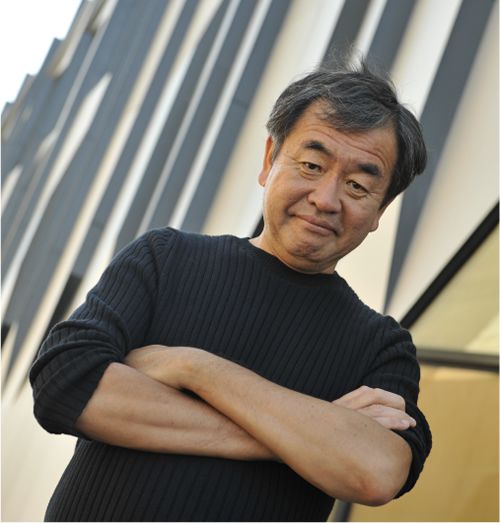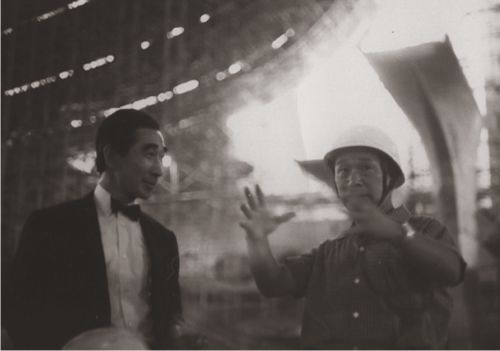SCROLL DOWN
- 日本語
- English
SCROLL DOWN

The association was formed to promote the nomination of Yoyogi National Gymnasium to be inscribed on the UNESCO World Heritage List. The association will engage in the following activities to pursue its main objectives:
Established on 24 November 2020.
Chairman
Kengo Kuma
Chief representative
Kengo Kuma & Associates
Advisor
Satoshi Ashidate
President
Japan Sport Council
Board
Osamu Goto
President
Professor, Research Institute Kogakuin University
Board
Manabu Chiba
Professor
The University of Tokyo
Board
Yoichi Miyamoto
Chairman of the Board and Representative Director
Shimizu Corporation
Board
Kengo Asakura
Chairman of the Board
HILLSIDE TERRACE
Auditor
Masanobu Komoda
Chairman of the Board and Representative Director
Mitsui Fudosan Co., Ltd.
Chief of secretariat
Saikaku Toyokawa
Chiba University
Secretariat
Kaori Hasegawa
Tokyo University of the Arts
Secretariat
Yuko Nishimura
Any Corporation
©JAPAN SPORT COUNCIL

When I was a boy, my house was located near Shin-Yokohama station, and the rice paddies spreading out in the surrounding area were my playground. Seeing the reinforced concrete viaducts rising one after another in the middle of those rice paddies, I felt the great shift of the times even as a child. At that time, Shibuya station of the former Japan National Railways was the only large building in the Shibuya area of Tokyo. Therefore, the sudden emergence of a massive concrete stadium with a series of high towers took me aback utterly. That was the Yoyogi National Gymnasium. This impression of "cool," and "amazing concrete Tokyo" set me in the mind to become an architect.
Times elapsed, and the Olympics were held in Tokyo a second time around, and I designed the New National Stadium, which used a lot of wood. I realized that I have a personal memory of the Yoyogi Gymnasium even as a child was essential in designing the new stadium contrasting two. Even today, when economic growth is not strongly expected, the Yoyogi National Stadium is still at the pinnacle of modern Japanese architecture. At the same time, it is an irreplaceable building that never stops inspiring us, contemporary architects. We hope to work with you to nominate the Yoyogi National Gymnasium as a World Heritage Site and pass on Japan's postwar architectural culture to future generations.
Kengo Kuma
Chief Representative

The National Indoor Gymnasium (now Yoyogi National Gymnasium) was built on a hill in Shibuya as the venue for the swimming and basketball competitions of the 18th Olympic Games held in Tokyo in October 1964. The site was once an army training camp, which was seized by the U.S. military as Washington Heights after the war, but was returned to Japan when the Olympics were held.
The gymnasium was designed by Kenzo Tange (1913-2005), one of Japan's leading postwar architects. Tange is known as an architect who was involved in numerous architectural and urban planning projects, including the Hiroshima Peace Memorial Park, the former Tokyo Metropolitan Government Building, the Kagawa Prefectural Government Building, the Tokyo Cathedral of St. Mary the Virgin, the Yamanashi Culture Hall, the Osaka Expo Festival Plaza, and the Tokyo Metropolitan Government Building.
Tange made bold use of a suspended roof structure in the Yoyogi National Gymnasium, skillfully arranging two gymnasiums, one large and one small, and a promenade connecting them. By taking advantage of the difference in elevation between Shibuya and Harajuku areas, Tange succeeded in smoothly guiding various visitors from Shibuya and Harajuku into the gymnasiums. Tange collaborated with Yoshikatsu Tsuboi, a structural engineer, and Uichi Inoue, a HAVC and sanitary equipment specialist to integrate numerous cutting-edge technologies, resulting in a futuristic design. On the other hand, the massive but gently sloping suspended roof of the first gymnasium is reminiscent of the large temple and shrine buildings of the Nara period (710-794) and strongly evokes a sense of continuity with traditional Japanese architecture.
After the 18th Olympic games, Yoyogi National Gymnasium No.1 was opened to the public as a swimming pool in summer and a skating rink in winter and was enjoyed by many citizens, while Gymnasium No. 2 has become a familiar place among sports circles as a sacred place for basketball. Since the 1980s, Gymnasium No.2 has been used as a venue for the spring high school volleyball tournament and for varieties of gigs, attracting many young people on a daily basis.
In 2021, the Yoyogi National Gymnasium was designated a National Important Cultural Property. It is still fresh in our minds that the stadium was used as the venue for the 32nd Olympic Games and Paralympic Games held in Tokyo in 2021.


Copyright all reserved2022©Koichi Torimura